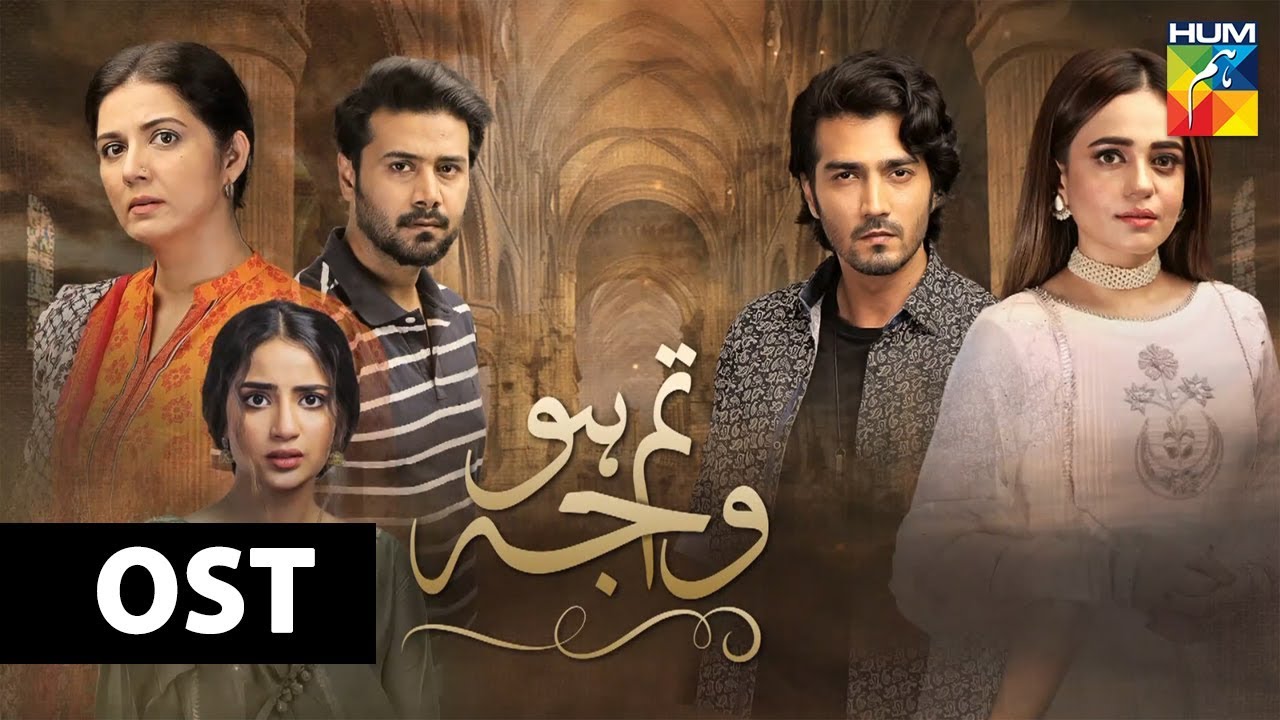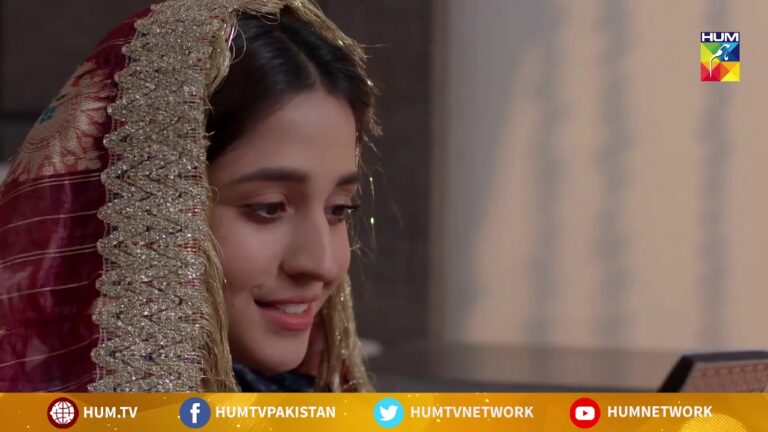Tum Ho Wajah Drama Review: Tum Ho Wajah (Urdu: تم ہو وجہ, lit. ”You Are the Reason”) is a 2019 Pakistani drama serial that captivated audiences with its blend of romance, emotional depth, and exploration of complex family dynamics. The narrative follows the journey of Farhan (Zahid Ahmed) and Mahirah (Sarah Khan), two individuals bound by a shared past trauma and the challenges of moving forward with love and forgiveness. This review delves into the drama’s strengths and weaknesses, offering a comprehensive analysis of its impact on viewers.
A Story of Second Chances and Letting Go of the Past:
Farhan and Mahirah are childhood sweethearts whose dreams of a future together are shattered by a tragic accident that takes Mahirah’s brother’s life. Farhan, wrongly blamed for the accident, is ostracized by Mahirah’s family, leading to a bitter separation.
Years later, fate brings them face-to-face again. Farhan, now a successful businessman, carries the burden of the past and seeks redemption. Mahirah, struggling to move on from the accident and her unresolved feelings towards Farhan, grapples with anger and forgiveness.
The narrative explores the complexities of love, loss, and the enduring impact of past trauma on individuals and their relationships. As Farhan and Mahirah confront their past and navigate the challenges of the present, they embark on a journey of healing, forgiveness, and rediscovering their connection.
Strengths of the Drama:
-
Compelling Characters: The characters are the heart of Tum Ho Wajah’s success. Farhan, a flawed but determined individual seeking redemption, resonates with viewers due to his vulnerability and his pursuit of forgiveness. Mahirah, grappling with grief, anger, and the complexities of love, represents the challenges of letting go of the past. The supporting characters, including Farhan’s family and Mahirah’s close friend, add depth and complexity to the narrative, offering diverse perspectives and emotional support.
-
Emotional Depth: Tum Ho Wajah is a deeply emotional drama that explores themes of grief, forgiveness, and the power of love. The narrative tackles sensitive topics with care and sensitivity, evoking empathy and understanding in viewers. The characters’ emotional journeys are portrayed realistically, allowing viewers to connect with their internal struggles and triumphs.
-
Beautifully Crafted Narrative: The drama unfolds at a well-paced and engrossing tempo. The narrative seamlessly blends moments of joy, heartbreak, and emotional growth, keeping viewers engaged throughout the story. Flashbacks are effectively used to reveal characters’ past experiences and motivations, adding depth to their development.
-
Social Commentary: While the drama primarily focuses on the characters’ personal journeys, it subtly addresses social issues prevalent in Pakistani society. It sheds light on the complexities of family dynamics, societal pressures on individuals, and the importance of breaking free from the shackles of the past to embrace forgiveness and move forward.
Weaknesses of the Drama:
-
Overused Tropes: While the overall narrative is captivating, the drama utilizes some recurring tropes commonly found in Pakistani dramas. These elements, such as misunderstandings leading to conflict and melodramatic emotional outbursts, might feel slightly predictable to seasoned viewers.
-
Uneven Pacing: At times, the pacing of the drama might feel uneven, with certain storylines progressing rapidly and others dragging slightly. This can occasionally disrupt the overall flow of the narrative and viewer engagement.
Delving Deeper into Tum Ho Wajah: Symbolism, Character Evolution, and Long-Term Impact
Building upon the initial review, let’s delve deeper into specific aspects of Tum Ho Wajah:
Exploring Symbolism and Artistic Choices:
Tum Ho Wajah utilizes various symbolic elements to enhance the narrative’s depth and emotional impact. The recurring motif of rain symbolizes the characters’ cleansing of emotional burdens and the possibility of starting anew. Both Farhan and Mahirah find solace and release during moments of rain, representing their journeys of healing and letting go of past pain.
The use of contrasting colors is significant. In the initial stages, Farhan’s wardrobe choices are subdued, reflecting his guilt and emotional turmoil. As he seeks redemption and embraces the possibility of moving forward, his clothing choices become brighter, symbolizing newfound hope and optimism. Similarly, Mahirah’s initial attire reflects her anger and resentment, often featuring darker tones. As she progresses on her journey of forgiveness, her clothing incorporates lighter colors, visually representing emotional growth and acceptance.
The director utilizes close-up shots to capture the emotional nuances of the characters, allowing viewers to connect with their internal struggles and triumphs. Slow-motion sequences are used effectively during pivotal moments of reconciliation and forgiveness, emphasizing the emotional weight of the scene and allowing viewers to fully absorb the characters’ growth.
Beyond Forgiveness: Exploring Character Evolution and the Complexity of Healing:
While forgiveness is a central theme in Tum Ho Wajah, the drama goes beyond a simplistic portrayal of letting go. It delves into the complexities of the healing process, showcasing the individual journeys of Farhan and Mahirah as they navigate their emotional baggage and conflicting feelings.
Farhan’s journey towards redemption is not linear. He faces setbacks and grapples with self-doubt, highlighting the challenges of confronting past mistakes and seeking forgiveness. Mahirah’s process of healing is equally nuanced, as she confronts her anger, grief, and the burden of societal expectations. The drama realistically portrays the characters’ internal struggles, allowing viewers to empathize with their emotional complexities and the time required for genuine healing and forgiveness.
Beyond the Screen: Legacy and Long-Term Impact:
Tum Ho Wajah’s legacy extends beyond its entertainment value. The drama sparked important conversations about the importance of open communication, empathy, and challenging societal norms that hinder the process of forgiveness. It encouraged viewers to reflect on their own capacity for forgiveness and the potential for healing through honest communication and understanding.
Furthermore, the drama resonated with a global audience by offering a relatable narrative of emotional healing, confronting past trauma, and the power of forgiveness. Farhan and Mahirah’s journey serves as an inspiration for individuals facing emotional burdens and the challenges of overcoming past hurts, offering a message of hope and encouragement to embrace personal growth and the possibility of forgiveness and new beginnings.
Overall Impact:
Despite its minor shortcomings, Tum Ho Wajah remains a compelling and impactful drama. Its exploration of emotional depth, relatable characters, and thought-provoking themes leave a lasting impression on viewers. The drama encourages viewers to confront past hurts, embrace the power of forgiveness, and believe in the transformative power of love and second chances.
Beyond the Screen: Legacy and Social Discourse:
Tum Ho Wajah sparked important conversations about the importance of communication, empathy, and letting go of past grievances. The drama challenged viewers to examine their own capacity for forgiveness and consider the emotional complexities of moving forward from past traumas.
Furthermore, the drama resonated with a global audience by offering a relatable narrative of love, loss, and the healing power of forgiveness. Farhan and Mahirah’s journey serves as an inspiration for individuals facing emotional burdens and the challenges of letting go, offering a message of hope and encouragement to embrace new beginnings.
Conclusion:
Tum Ho Wajah transcends the boundaries of a conventional love story. It delves into complex characters and family dynamics, explores sensitive themes with nuance, and offers a powerful message about the transformative power of forgiveness. While the drama has its shortcomings, its strengths lie in its engaging narrative, emotionally charged portrayal of relationships, and ability to address social issues through a captivating story.










+ There are no comments
Add yours